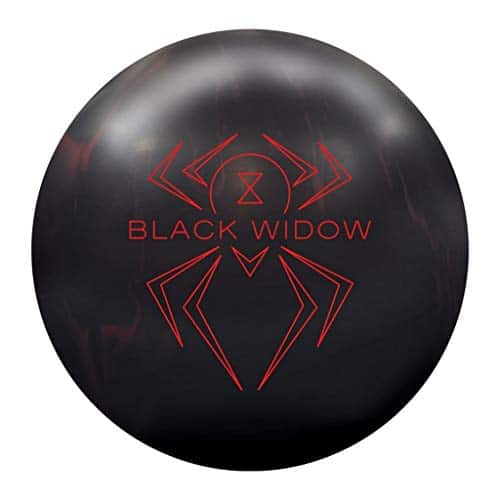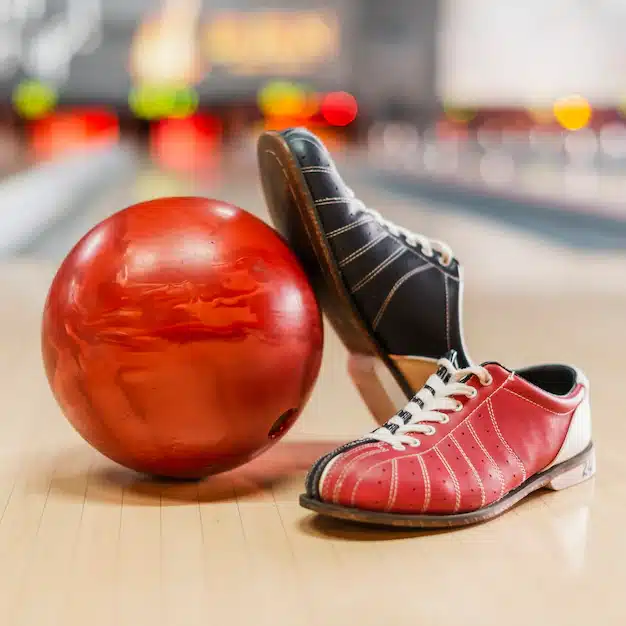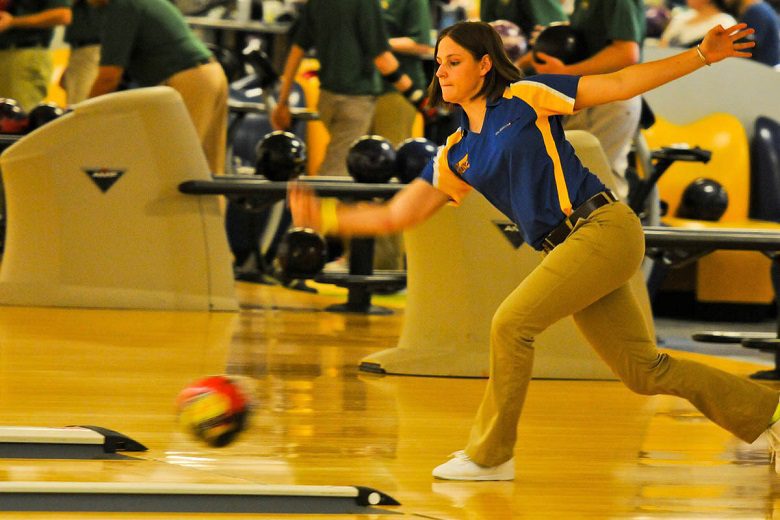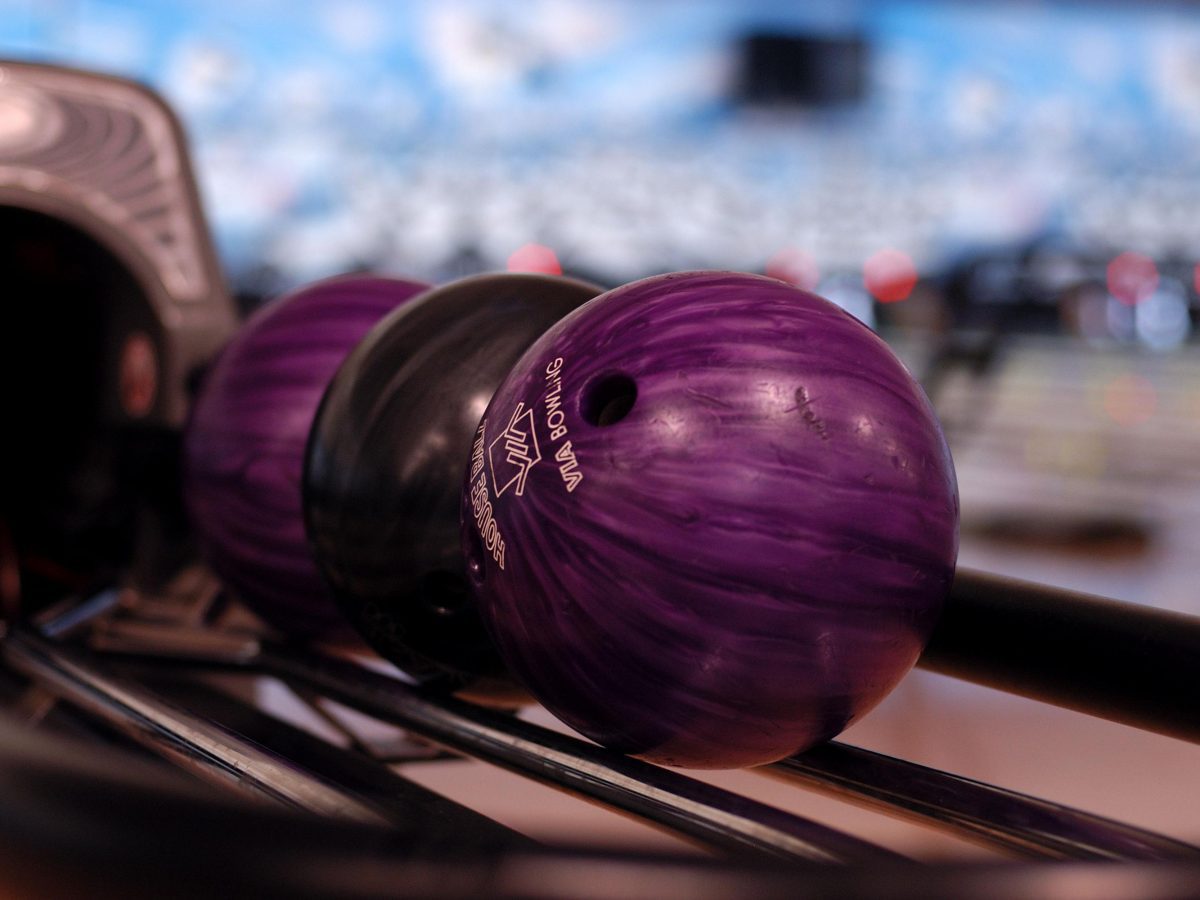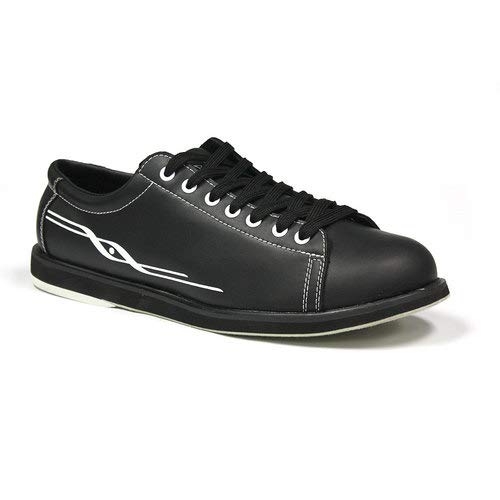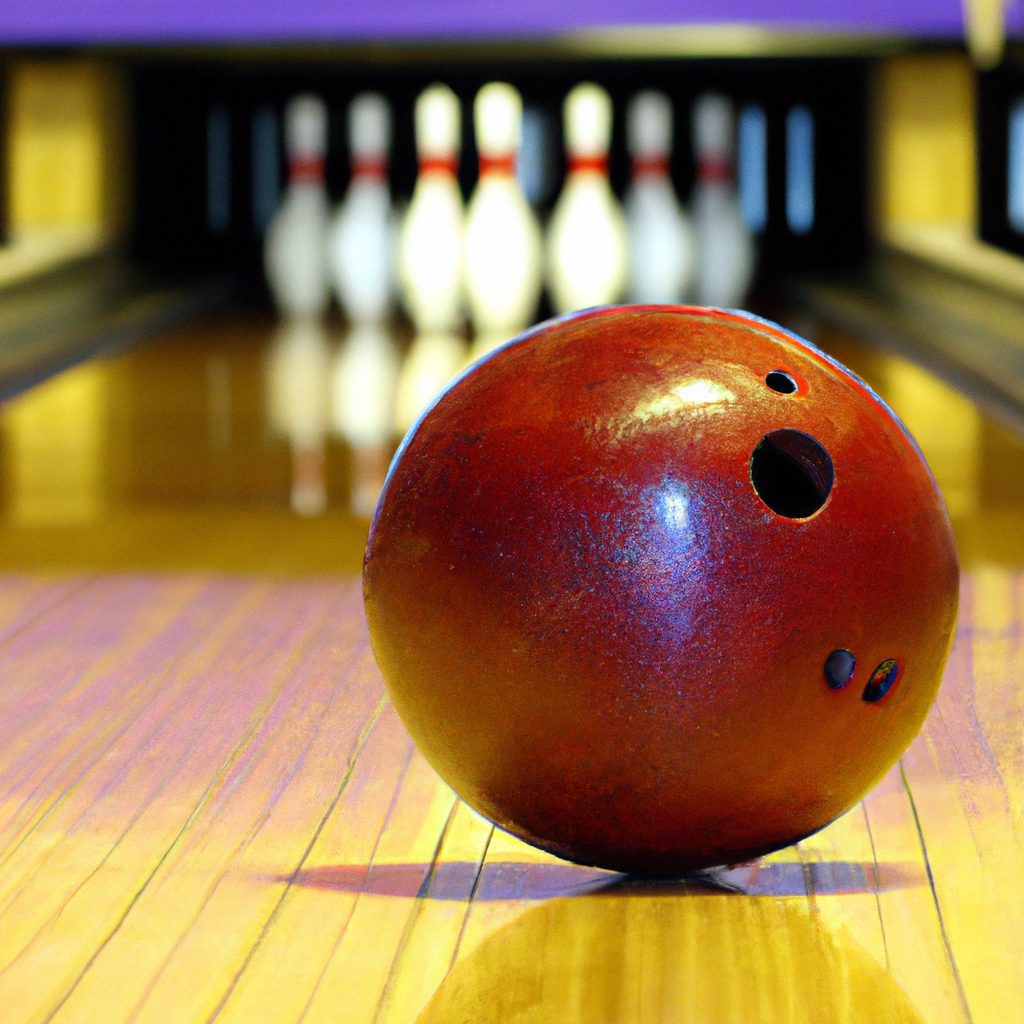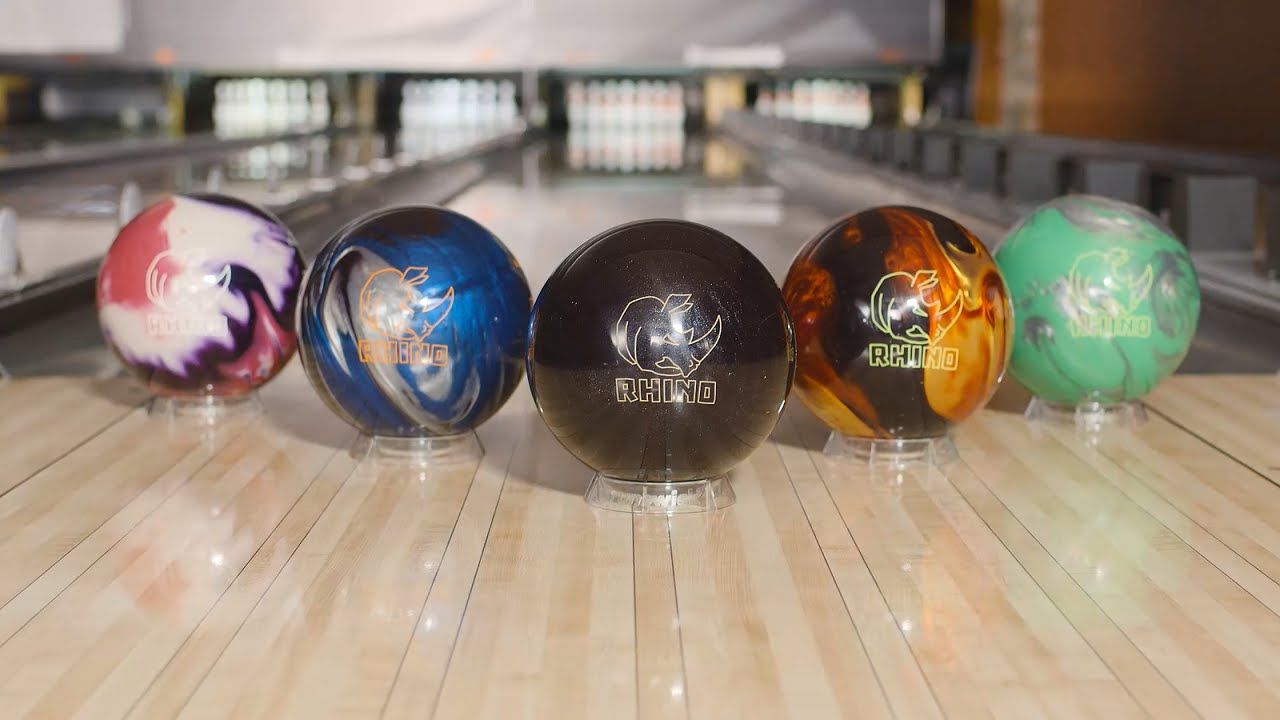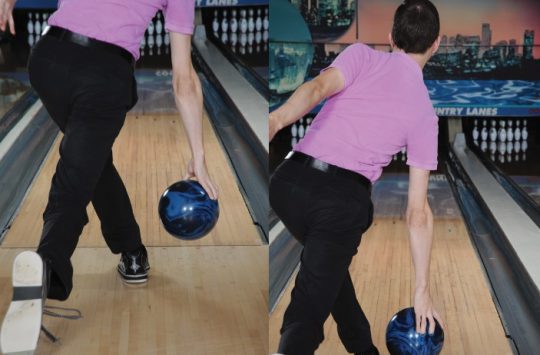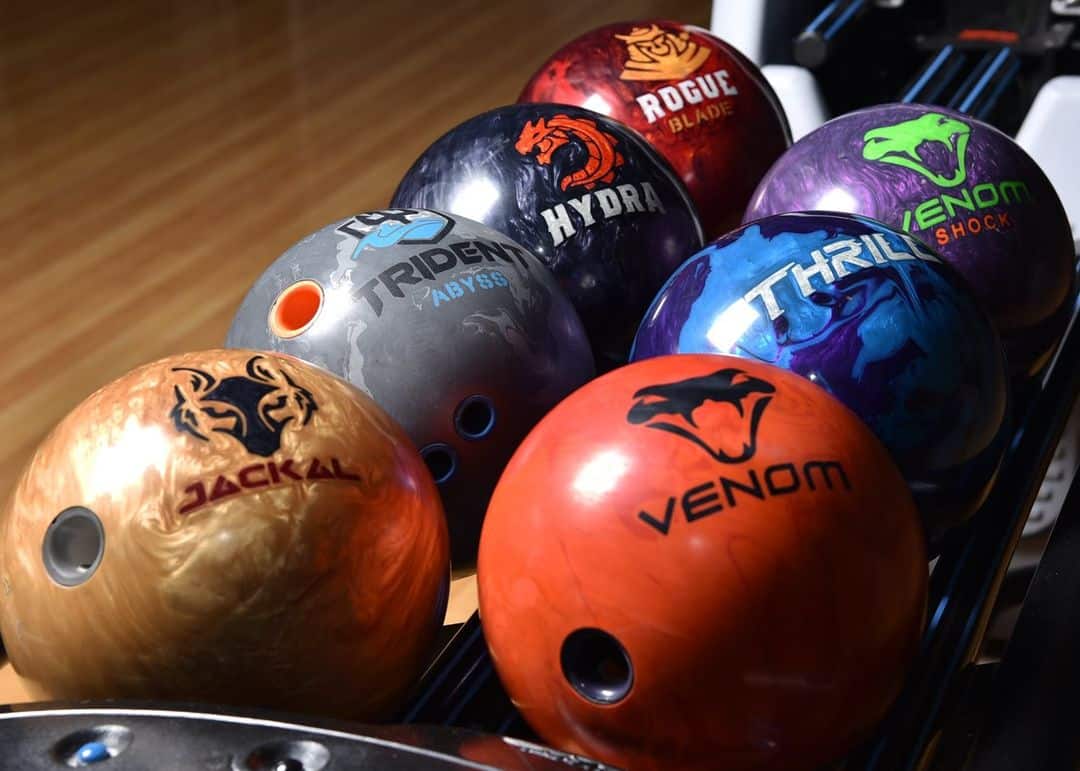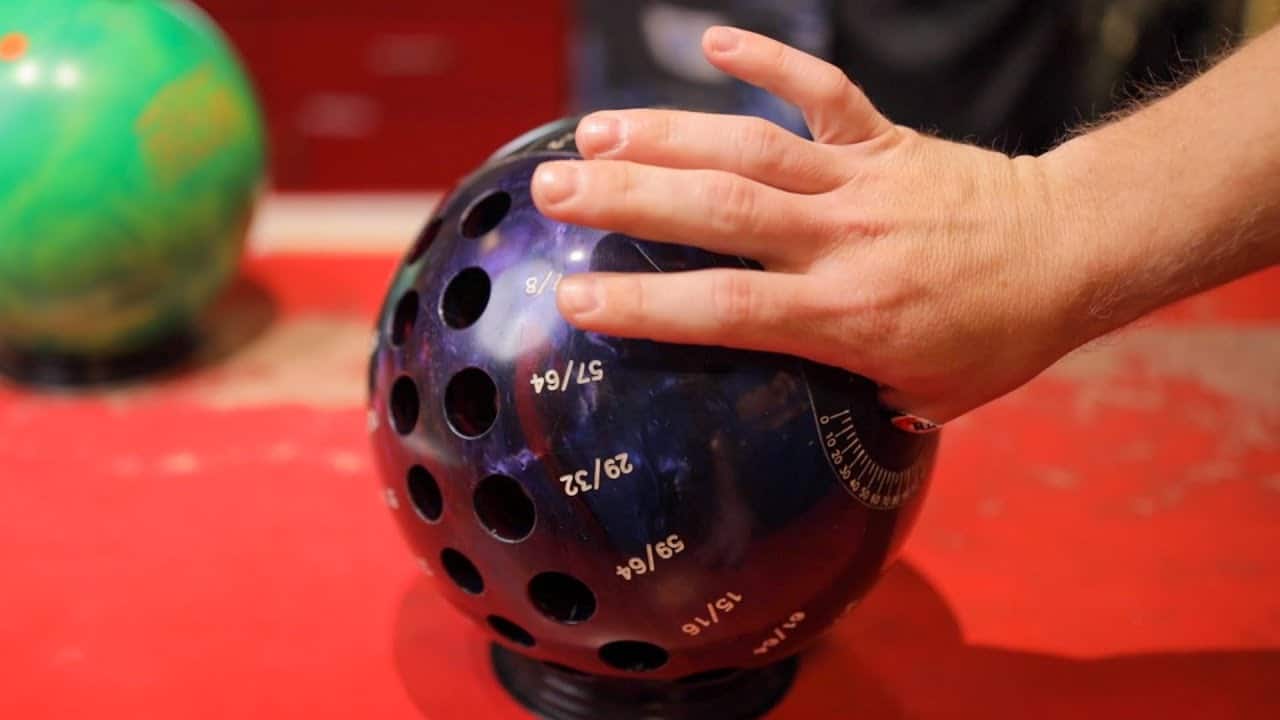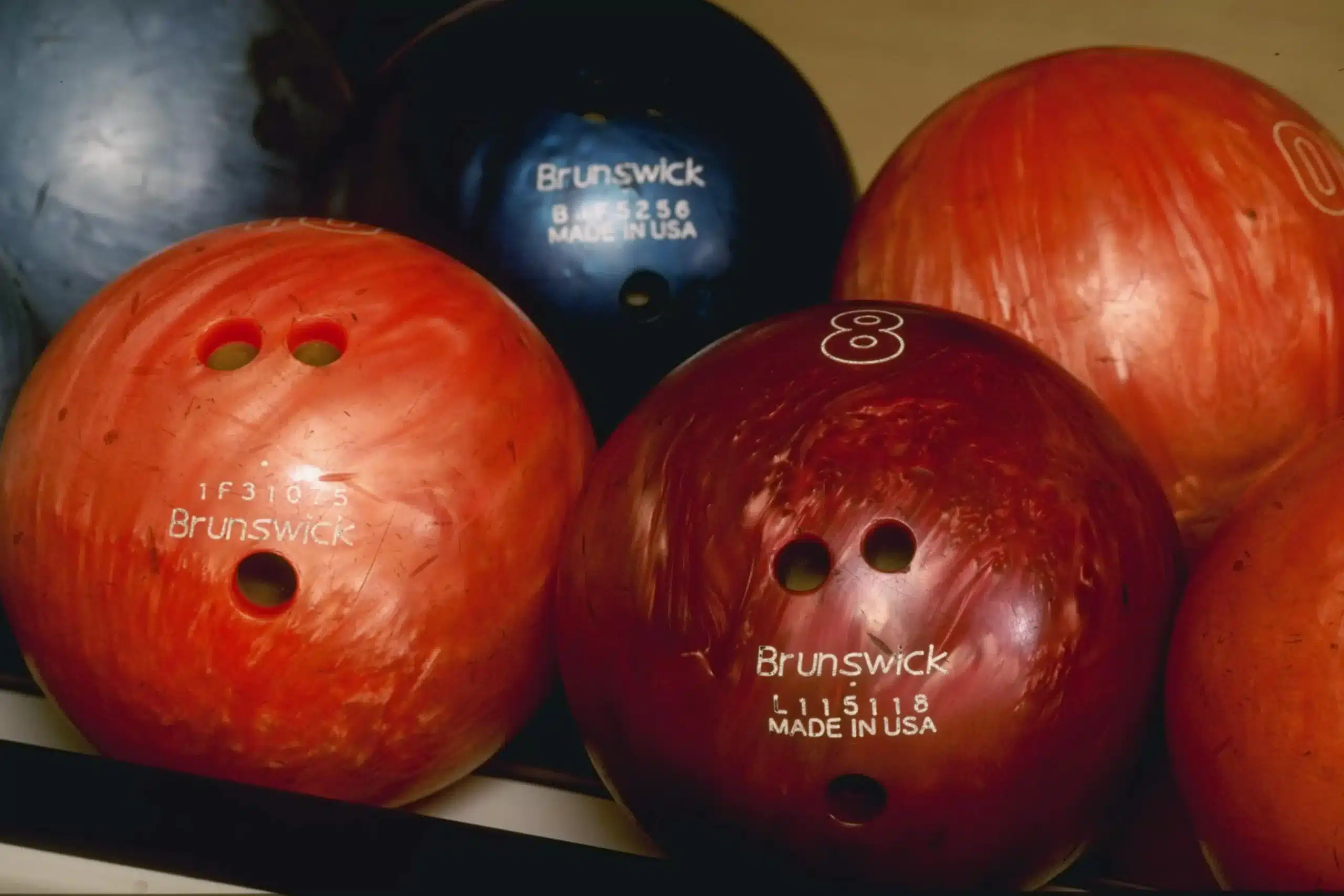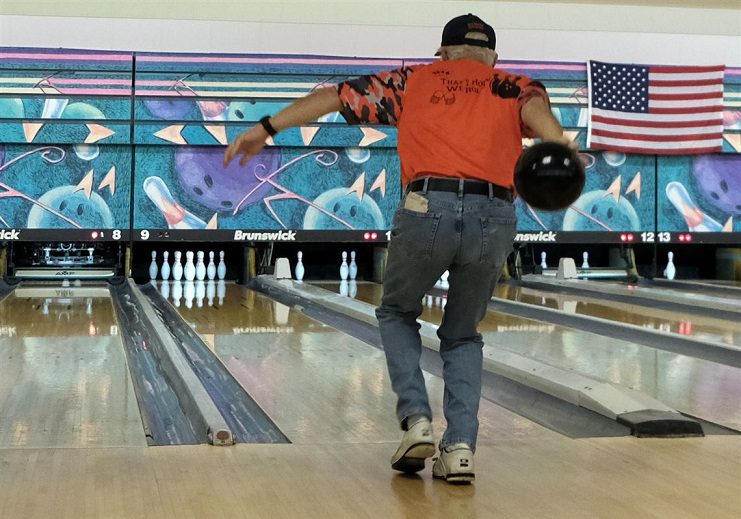If you’re a bowling enthusiast or just starting the game, understanding the different kinds of bowling balls is essential.
From polyester to urethane, reactive resin to particle, each type of ball offers unique characteristics that can significantly impact your performance on the lane.
Whether you prefer a ball that offers exceptional hook potential or one that glides smoothly down the lane, this article will guide you through the exciting world of bowling balls and help you make an informed choice for your next game.
Review contents
Plastic Bowling Balls
What are plastic bowling balls?
Plastic bowling balls are made from a durable and inexpensive material called polyester. They are the most common bowling balls used by beginners, recreational bowlers, and those bowling on dry lanes. Plastic bowling balls have a solid, one-piece construction and come in various colors and designs.
Advantages of plastic bowling balls
There are several advantages to using plastic bowling balls. Firstly, they are great for beginners as they are easier to control due to their predictable and straight trajectory. They are also less prone to hooking, making them ideal for bowlers who prefer a straight bowling style.
Another advantage of plastic bowling balls is their affordability. Plastic bowling balls are significantly cheaper than higher-performance balls, making them accessible to bowlers on a budget. Additionally, their durability is admirable, as plastic balls are less prone to cracking or chipping than other bowling balls.
Disadvantages of plastic bowling balls
While plastic bowling balls have their advantages, they also have some limitations. One major disadvantage is their lack of versatility. Plastic balls are designed for dry lanes, so they may struggle to provide the necessary hook potential on oilier surfaces. Consequently, experienced bowlers who rely on advanced techniques and ball motion may find plastic balls limiting.
Another disadvantage is the reduced pin carry. Due to their low friction coverstock, plastic bowling balls tend to have less energy transfer to the pins, resulting in fewer pin knockdowns. While this may not significantly impact novice bowlers, competitive bowlers may find this aspect frustrating.
Best uses for plastic bowling balls
Plastic bowling balls are best suited for specific situations and bowlers. They excel when used on dry lanes or lanes with minimal oil patterns. For beginners or recreational bowlers, plastic balls provide an excellent starting point to develop basic bowling skills and accuracy. They are also suitable for bowlers who prefer a straight-line approach or struggle with controlling the ball’s hook.
Urethane Bowling Balls
What are urethane bowling balls?
Urethane bowling balls are constructed using a durable and reactive material called urethane. They are a step up from plastic balls and are known for their increased hook potential and versatility. Urethane balls have a coverstock made of urethane material and are popular among bowlers of varying skill levels.
Advantages of urethane bowling balls
Urethane bowling balls offer several advantages to bowlers. First and foremost, their increased hook potential makes them a preferred choice for bowlers requiring more control and versatility on the lanes. Urethane balls smoothly transition from the front to the back end, allowing for a consistent and controllable motion.
Additionally, urethane balls have excellent pin carry, transferring ample energy to the pins upon impact. This feature contributes to higher strike percentages and better overall scoring potential. Urethane balls also offer more backend reaction than plastic balls, making them an attractive option for bowlers seeking a balanced reaction.
Disadvantages of urethane bowling balls
Despite their advantages, urethane bowling balls also have some disadvantages. One drawback is their reduced durability compared to plastic balls. The urethane coverstock is more susceptible to scratching and wear, affecting the ball’s performance over time. Regular maintenance and proper storage are crucial to prolonging the life of urethane balls.
Another disadvantage is their performance on heavily oiled lanes. While urethane balls can effectively handle medium to light oil patterns, they may struggle with heavy oil conditions. In such cases, bowlers may experience decreased hook potential and control, requiring them to switch to balls with a more aggressive coverstock.
Best uses for urethane bowling balls
Urethane bowling balls are suitable for various situations and bowlers. They perform well in medium to light oil lane conditions, where they can showcase their moderate hook potential and controllable motion. Urethane balls are favored by bowlers who prefer a controlled hook technique and those looking for a balance between power and accuracy.
Reactive Resin Bowling Balls
What are reactive resin bowling balls?
Reactive resin bowling balls are prevalent among bowlers seeking enhanced hook potential and increased pin carry. They feature a coverstock made of reactive resin, a highly porous and reactive material that provides superior traction on the lanes.
Advantages of reactive resin bowling balls
The advantages of reactive resin bowling balls are numerous. The reactive coverstock of these balls grips the lane surface more efficiently, generating a higher frictional force. This increased traction allows the ball to create a more muscular hooking motion and a more pronounced backend reaction, resulting in improved pin carry and higher strike percentages.
Reactive resin balls are known for their versatility in different oil patterns. They excel on medium to heavy oil conditions, making them a popular choice for competitive bowlers. These balls also offer superior hitting power, driving through the pins with more energy and increasing the likelihood of achieving a strike.
Disadvantages of reactive resin bowling balls
Despite their advantages, reactive resin bowling balls have a few drawbacks. One of the main concerns is their higher cost compared to plastic and urethane balls. The advanced technology and materials used in their construction contribute to a higher price tag, making them less suitable for bowlers on a tight budget.
Another disadvantage is their performance on dry lanes or lanes with minimal oil. Reactive resin balls are designed to perform best in medium to heavy oil conditions; therefore, using them on dry lanes can decrease hook potential and unpredictability. Additionally, the increased friction of the reactive coverstock can cause the ball to wear out more quickly, requiring more frequent resurfacing and maintenance.
Best uses for reactive resin bowling balls
Reactive resin bowling balls are optimal for medium to heavy oil patterns. Their enhanced hook potential and backend reaction make them ideal for bowlers aiming to generate maximum pin carry and dominate on oilier surfaces. These balls are commonly used in league play and tournaments, where the competition demands excellent control and hitting power.
Particle Bowling Balls
What are particle bowling balls?
Particle bowling balls, also known as resin particle bowling balls, combine the characteristics of reactive resin balls with added particles or additives in the coverstock. These particles increase the ball’s gripping ability, hook potential, and overall performance on the lanes.
Advantages of particle bowling balls
Particle bowling balls offer several advantages to bowlers seeking increased traction and hook potential. The added particles or additives in the coverstock enhance the ball’s ability to grip the lane surface, resulting in a more aggressive and pronounced hooking motion. This increased hook potential allows bowlers to create a powerful and versatile ball reaction.
Furthermore, particle balls excel in heavy oil conditions. They provide excellent traction, allowing bowlers to navigate through oil patterns with ease and maintain consistent ball motion. Particle bowling balls also offer exceptional hitting power, transferring maximum energy to the pins and improving the chances of achieving strikes.
Disadvantages of particle bowling balls
Despite their advantages, particle bowling balls have a few disadvantages. Firstly, their performance may be limited in drier or less oily lane conditions. The increased friction and aggression of the particle coverstock may lead to erratic ball motion or premature hooking on dry lanes, requiring bowlers to switch to balls with different coverstocks.
Another drawback is the cost of particle balls. Similar to reactive resin balls, particle balls tend to have a higher price point due to the advanced technology and materials used in their construction. This factor may deter budget-conscious bowlers from investing in particle bowling balls.
Best uses for particle bowling balls
Particle bowling balls excel in heavily oiled lane conditions. Their aggressive coverstock, combined with added particles or additives, allows for enhanced traction and increased hook potential. Therefore, these balls are an excellent choice for bowlers competing on challenging oil patterns or those seeking optimal performance in league play or tournaments.
Hybrid Bowling Balls
What are hybrid bowling balls?
Hybrid bowling balls combine characteristics from different coverstock materials, typically reactive resin and urethane or particle coverstocks. The combination of different materials creates a unique ball reaction that offers benefits from both coverstocks.
Advantages of hybrid bowling balls
Hybrid bowling balls offer several advantages to bowlers seeking versatility and adaptability. Combining different coverstock materials creates a refined balance between aggression and control, allowing bowlers to achieve a controlled and powerful hook motion.
Hybrid balls are known for their smooth transition from the front to the back end, making them more forgiving for bowlers with varying skill levels. They provide a solid mid-lane reaction while maintaining the backend continuation of a reactive coverstock. This versatility allows bowlers to adjust their strategy to different lane conditions.
Disadvantages of hybrid bowling balls
While hybrid bowling balls have advantages, they also have drawbacks. One disadvantage is their performance in extreme lane conditions. Hybrid balls may not perform as well as specialized balls designed for specific situations, such as heavily oiled or extremely dry lanes. In these extreme conditions, bowlers may experience reduced hook potential and predictability.
Another drawback is the possible imbalance of characteristics from the different coverstock materials. Bowlers may notice variations in ball reaction and performance depending on the combination. Adjustments to drilling layouts and surface adjustments may be necessary to optimize the ball’s performance.
Best uses for hybrid bowling balls
Hybrid bowling balls are versatile and effective in various lane conditions. They are instrumental in medium to medium-heavy oil patterns where they can provide the desired balance between control and hook potential. Hybrid balls suit competitive bowlers and those looking for adaptability in league play.
Symmetrical Core Bowling Balls
What are symmetrical core bowling balls?
Symmetrical core bowling balls have a uniformly symmetrical weight block design at the center of the ball. This design creates a consistent and predictable ball motion, regardless of the drilling layout or ball rotation.
Advantages of symmetrical core bowling balls
The advantages of symmetrical core bowling balls are significant. Due to their symmetrical weight block design, these balls offer consistent ball motion, making them easier to control and read on the lanes. This predictability allows bowlers to adjust their bowling technique or equipment precisely.
Symmetrical core balls are also known for their versatility. They can be effective on different lane conditions, giving bowlers the flexibility to use them in various bowling environments. This adaptability makes them popular for bowlers aiming for consistent performance across different oil patterns.
Disadvantages of symmetrical core bowling balls
One disadvantage of symmetrical core bowling balls is their lower overall hook potential compared to asymmetrical core balls. The symmetrical weight block design limits the ball’s ability to generate a solid, aggressive hooking motion. Bowlers who rely on a powerful hook may find symmetrical core balls lacking in that aspect.
Another drawback is their slightly lower pin carry efficiency than asymmetrical core balls. While this difference may be minimal for most bowlers, competitive bowlers seeking maximum pin carry and knockdown power may prefer asymmetrical core balls.
Best uses for symmetrical core bowling balls
Symmetrical core bowling balls suit bowlers of all skill levels and bowling styles. Their consistent ball motion and versatility make them an excellent choice for bowlers who prioritize control and predictability. These balls are commonly used by recreational and league bowlers looking for reliability across various lane conditions.
Asymmetrical Core Bowling Balls
What are asymmetrical core bowling balls?
Asymmetrical core bowling balls have an irregular weight block design, which enhances the ball’s hook potential and angularity. The asymmetric shape creates varying mass distributions, providing a more dynamic ball reaction on the lanes.
Advantages of asymmetrical core bowling balls
The advantages of asymmetrical core bowling balls are notable. The irregular weight block design increases the ball’s differential, resulting in higher hook potential and increased backend motion. This enhanced hook potential allows bowlers to create a sharper and more dramatic hook, making them ideal for bowlers seeking an assertive and aggressive ball reaction.
Asymmetrical core balls are known for their versatility in different oil patterns. They can create angles and ball motions that are difficult to achieve with symmetrical core balls, giving bowlers an edge in adjusting to various lane conditions. Additionally, asymmetrical core balls provide more continuation through the pins, increasing the chances of achieving higher pin carry and scoring potential.
Disadvantages of asymmetrical core bowling balls
One disadvantage of asymmetrical core bowling balls is their potentially unpredictable ball motion. The varying mass distributions in the core design can lead to a less consistent ball reaction, making it more challenging to read and adjust to changing lane conditions. This unpredictability may require bowlers to adjust their technique or equipment more frequently.
Another drawback is the increased complexity of drilling layouts for asymmetrical core balls. Achieving the desired ball motion and layout may require more experimentation and expertise from a professional driller. This aspect may deter less experienced bowlers from using asymmetrical core balls.
Best uses for asymmetrical core bowling balls
Asymmetrical core bowling balls benefit bowlers seeking enhanced hook potential and angularity on the lanes. These balls perform exceptionally well on medium to heavy oil patterns, where the increased hook potential and backend motion can be fully utilized. Asymmetrical core balls are commonly used by experienced and competitive bowlers who are proficient in adjusting to varying lane conditions.
Pancake Core Bowling Balls
What are pancake core bowling balls?
Pancake core bowling balls have a symmetrical weight block design that resembles a disc or pancake shape. This core design is typically used in entry-level and lower-performance bowling balls.
Advantages of pancake core bowling balls
Pancake core bowling balls offer some advantages, particularly for beginner and novice bowlers. The symmetrical weight block design provides a predictable ball motion and consistent reaction on the lanes. This predictability benefits bowlers developing their bowling skills and aiming for control and accuracy.
Additionally, pancake core balls are often more affordable compared to higher-performance balls. Their more straightforward construction and lower-cost materials make them accessible to bowlers on a budget. This affordability allows beginners to enter the sport without a substantial financial investment.
Disadvantages of pancake core bowling balls
One disadvantage of pancake core bowling balls is their reduced hook potential compared to more advanced bowling balls. The symmetrical weight block design limits the ball’s ability to create a solid, aggressive hooking motion. As bowlers progress and develop more advanced techniques, they may need to upgrade to higher-performance balls for additional hook potential.
Furthermore, pancake core balls may not offer the same hitting power and pin carry as higher-performance balls. The simplicity of their design can result in less energy transfer upon impact with the pins, potentially leading to lower strike percentages.
Best uses for pancake core bowling balls
Pancake core bowling balls are best suited for beginner and novice bowlers starting their bowling journey. These balls provide a predictable and controlled ball motion that helps bowlers develop their skills and gain confidence on the lanes. Pancake core balls are commonly used in recreational bowling, youth leagues, and beginner-level tournaments.
High-Performance Bowling Balls
What are high-performance bowling balls?
High-performance bowling balls are designed with advanced technology and materials to provide superior hook potential, hitting power, and overall performance. These balls are typically used by serious and competitive bowlers aiming to excel in various lane conditions.
Advantages of high-performance bowling balls
The advantages of high-performance bowling balls are significant. These balls offer the highest hook potential, allowing bowlers to generate dramatic and aggressive ball motions. Whether it’s heavy oil or dry lanes, high-performance balls provide the versatility and adaptability needed to dominate in different environments.
Additionally, high-performance balls excel in hitting power, delivering maximum energy to the pins for optimal pin carry and knockdown. Their advanced coverstock materials and core designs enable bowlers to achieve higher strike percentages and overall scoring potential.
Disadvantages of high-performance bowling balls
One of the main disadvantages of high-performance bowling balls is their higher cost. The advanced technology, materials, and design contribute to a higher price point than lower-performance balls. The investment required for high-performance balls may not be feasible for bowlers on a limited budget.
Furthermore, high-performance balls may require more skill and expertise to utilize effectively. The increased hook potential and aggressive ball motion can be challenging to control for less experienced or novice bowlers. Proper technique, lane reading, and adjustments are crucial to optimize the performance of high-performance balls.
Best uses for high-performance bowling balls
High-performance bowling balls are designed for severe, competitive bowlers who demand maximum hook potential and overall performance. These balls suit various lane conditions, allowing bowlers to adapt their game and strategy accordingly. High-performance balls are commonly used in professional tournaments, league play, and competitive events.
Entry-Level Bowling Balls
What are entry-level bowling balls?
Entry-level bowling balls are designed for beginner and novice bowlers just starting to explore the sport. These balls provide a solid foundation for bowlers to develop their skills and gain experience on the lanes.
Advantages of entry-level bowling balls
Entry-level bowling balls offer several advantages for beginners. Firstly, they provide a predictable and controlled ball motion, allowing bowlers to focus on developing their fundamental techniques and accuracy. The consistent reaction of entry-level balls promotes a more stable and less erratic ball path, making it easier for new bowlers to understand and adjust to their throws.
Another advantage is the affordability of entry-level bowling balls. As beginners may not want to invest heavily in high-performance balls immediately, entry-level balls provide a more budget-friendly option. This affordability allows beginners to explore the sport without a significant financial commitment.
Disadvantages of entry-level bowling balls
One disadvantage of entry-level bowling balls is their limited hook potential compared to higher-performance balls. While this may not be a concern for beginners focusing on control and accuracy, as bowlers progress and develop more advanced techniques, they may require balls with higher hook potential.
Additionally, entry-level balls may not offer the same pin carry and hitting power as higher-performance balls. The more straightforward construction and materials used in entry-level balls can result in less energy transfer to the pins, potentially leading to lower strike percentages.
Best uses for entry-level bowling balls
Entry-level bowling balls are best suited for beginner and novice bowlers in the early stages of their bowling journey. These balls provide a predictable and stable ball motion that helps bowlers develop their techniques and gain confidence on the lanes. Entry-level balls are commonly used in recreational bowling, youth leagues, and beginner-level tournaments.
By covering the various types of bowling balls, their advantages and disadvantages, and their best uses, this comprehensive article offers a detailed overview for bowlers of all skill levels. Whether you’re a beginner looking to get started or a seasoned bowler looking to explore new options, understanding the different types of bowling balls can help you make an informed decision and enhance your bowling experience. So, go ahead and choose the ball that suits your style, and enjoy the thrill of knocking down those pins!









![Spare bowling ball Top 10 in 2024. (reviews) Top 10 Best Spare Bowling Balls [2021 Reviewed]](http://landofbowling.com/wp-content/uploads/2021/07/Top-10-Best-Spare-Bowling-Balls-2021-Reviewed.jpg)






